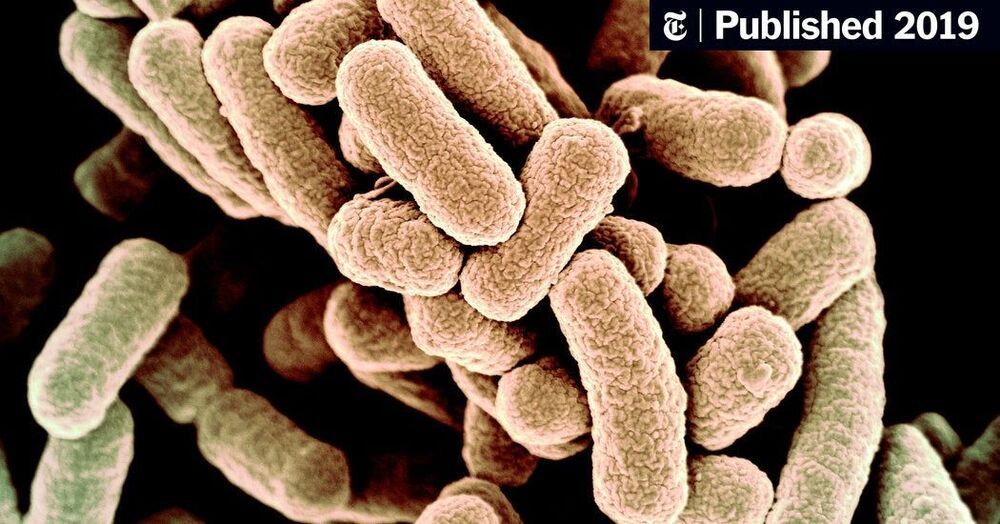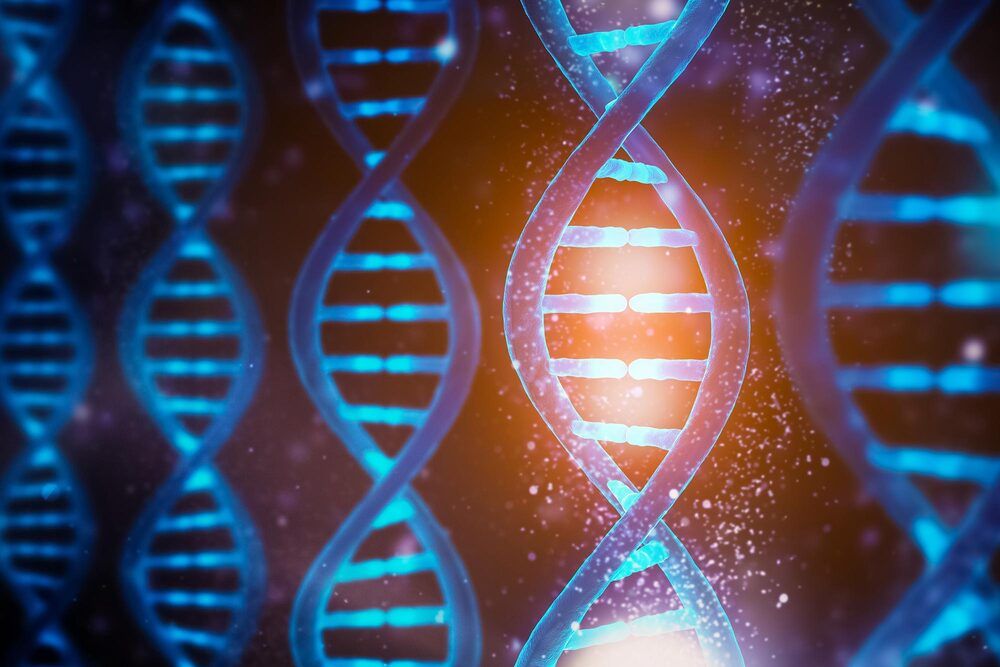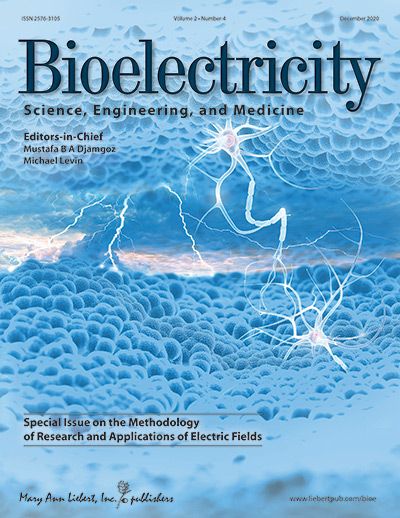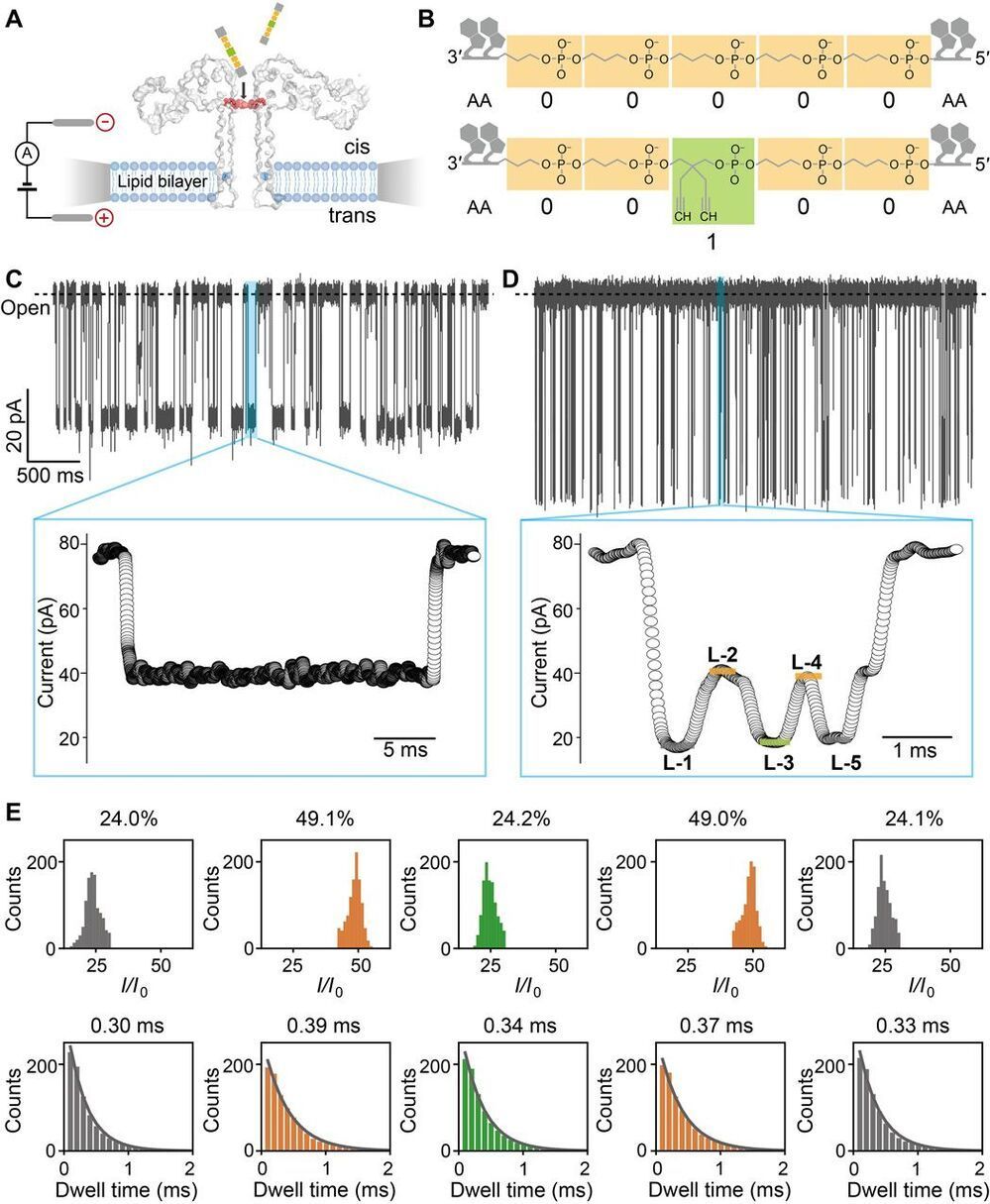Circa 2019 o.o!
In a milestone for synthetic biology, colonies of E. coli thrive with DNA constructed from scratch by humans, not nature.


Biochemists use protein engineering to transfer photocaging groups to DNA.
DNA (deoxyribonucleic acid) is the basis of life on earth. The function of DNA is to store all the genetic information, which an organism needs to develop, function and reproduce. It is essentially a biological instruction manual found in every cell.
Biochemists at the University of Münster have now developed a strategy for controlling the biological functions of DNA with the aid of light. This enables researchers to better understand and control the different processes which take place in the cell – for example epigenetics, the key chemical change and regulatory lever in DNA.

#JustAReminder why knowing the origin of this disease is so important. Shi Zhengli who ran the lab in Wuhan worked with Ralph Baric on this gain of function research.
Declan Butler.
12 November 2015
An experiment that created a hybrid version of a bat coronavirus — one related to the virus that causes SARS (severe acute respiratory syndrome) — has triggered renewed debate over whether engineering lab variants of viruses with possible pandemic potential is worth the risks.
In an article published in Nature Medicine 1 on 9 November, scientists investigated a virus called SHC014, which is found in horseshoe bats in China. The researchers created a chimaeric virus, made up of a surface protein of SHC014 and the backbone of a SARS virus that had been adapted to grow in mice and to mimic human disease. The chimaera infected human airway cells — proving that the surface protein of SHC014 has the necessary structure to bind to a key receptor on the cells and to infect them. It also caused disease in mice, but did not kill them.
The findings reinforce suspicions that bat coronaviruses capable of directly infecting humans (rather than first needing to evolve in an intermediate animal host) may be more common than previously thought, the researchers say.
But other virologists question whether the information gleaned from the experiment justifies the potential risk. Although the extent of any risk is difficult to assess, Simon Wain-Hobson, a virologist at the Pasteur Institute in Paris, points out that the researchers have created a novel virus that “grows remarkably well” in human cells. “If the virus escaped, nobody could predict the trajectory,” he says.
Science and Futurism with Isaac Arthur is a YouTube channel which focuses on exploring the depths of concepts in science and futurism. Since its first episode in 2014, SFIA has considered topics ranging from the seemingly mundane, to the extremely exotic, featuring episodes on megastructure engineering, interstellar travel, the future of earth, and the Fermi paradox, among others. Yet regardless of how strange a subject may seem, Isaac always tries to ensure that the discussion is grounded in the known science of today.
Isaac Arthur joins John Michael Godlier on today’s Event Horizon to discuss these subjects, the future past 2020. Thoughts on life extension. Nanotechnology. Artificial intelligence. The Fermi paradox.
What is the most obvious answer to the Fermi paradox?
Science and Futurism with Isaac Arthur: https://www.youtube.com/channel/UCZFipeZtQM5CKUjx6grh54g.
Want to support the channel?
Patreon: https://www.patreon.com/EventHorizonShow.
Follow us at other places!

Shared last year, but with the talk of future regenerative medicine I think it is important: Regenerative medicine aims to engineer tissue constructs that can recapitulate the functional and structural properties of native organs. Most novel regenerative therapies are based on the recreation of a three-dimensional environment that can provide essential guidance for cell organization, survival, and function, which leads to adequate tissue growth. The primary motivation in the use of conductive nanomaterials in tissue engineering has been to develop biomimetic scaffolds to recapitulate the electrical properties of the natural extracellular matrix, something often overlooked in numerous tissue engineering materials to date. In this review article, we focus on the use of electroconductive nanobiomaterials for different biomedical applications, particularly, very recent advancements for cardiovascular, neural, bone, and muscle tissue regeneration. Moreover, this review highlights how electroconductive nanobiomaterials can facilitate cell to cell crosstalk (i.e., for cell growth, migration, proliferation, and differentiation) in different tissues. Thoughts on what the field needs for future growth are also provided.
Bioelectricity.
While it’s probably most famous for its role in gene editing, CRISPR does more than just that: its ability to precisely cut and alter DNA could lead to new antibiotics, faster diagnosis tools, and more.
Hosted by: Hank Green.
SciShow has a spinoff podcast! It’s called SciShow Tangents. Check it out at http://www.scishowtangents.org.
———
Support SciShow by becoming a patron on Patreon: https://www.patreon.com/scishow.
———
Huge thanks go to the following Patreon supporters for helping us keep SciShow free for everyone forever:
Marwan Hassoun, Jb Taishoff, Bd_Tmprd, Harrison Mills, Jeffrey Mckishen, James Knight, Christoph Schwanke, Jacob, Matt Curls, Sam Buck, Christopher R Boucher, Eric Jensen, Lehel Kovacs, Adam Brainard, Greg, Ash, Sam Lutfi, Piya Shedden, KatieMarie Magnone, Scott Satovsky Jr, charles george, Alex Hackman, Chris Peters, Kevin Bealer.
———
Looking for SciShow elsewhere on the internet?
Facebook: http://www.facebook.com/scishow.
Twitter: http://www.twitter.com/scishow.
Tumblr: http://scishow.tumblr.com.
Instagram: http://instagram.com/thescishow.
———
Sources:
https://www.nobelprize.org/prizes/chemistry/2020/press-release/
https://science.sciencemag.org/content/337/6096/816
https://www.livescience.com/58790-crispr-explained.html.
https://www.idtdna.com/pages/support/faqs/which-repair-pathw…hej-or-hdr.
https://www.cdc.gov/antibiotic-use/stewardship-report/pdf/stewardship-report.pdf.
https://medlineplus.gov/druginfo/meds/a685015.html.
https://www.livescience.com/44201-how-do-antibiotics-work.html.
https://www.cdc.gov/antibiotic-use/community/about/antibioti…-faqs.html.
https://www.ncbi.nlm.nih.gov/pmc/articles/PMC5725362/
https://disruptionhub.com/destroying-disease-crispr/
https://www.technologyreview.com/2017/04/17/106060/edible-cr…tibiotics/
https://www.asmscience.org/content/journal/microbiolspec/10.…3-2016
https://pubmed.ncbi.nlm.nih.gov/28959937/
https://www.cdc.gov/cdiff/what-is.html.
https://www.medrxiv.org/content/10.1101/2020.05.04.20091231v1
https://blog.addgene.org/finding-nucleic-acids-with-sherlock-and-detectr.
https://www.nature.com/articles/s41421-018-0028-z.
https://www.nature.com/articles/s41596-019-0210-2
https://www.genome.gov/about-genomics/fact-sheets/Polymerase…Fact-Sheet.
https://www.organdonor.gov/statistics-stories/statistics.html.
https://www.kidney.org/atoz/content/transplant-waitlist.
https://www.ncbi.nlm.nih.gov/pmc/articles/PMC88959/
https://www.fda.gov/vaccines-blood-biologics/xenotransplantation.
https://www.nature.com/news/new-life-for-pig-to-human-transplants-1.18768
https://science.sciencemag.org/content/357/6357/1303
https://retrovirology.biomedcentral.com/articles/10.1186/s12…0411-8
https://science.sciencemag.org/content/350/6264/1101
https://www.ncbi.nlm.nih.gov/pmc/articles/PMC4997577/
https://www.ncbi.nlm.nih.gov/pmc/articles/PMC5932395/
https://www.genome.gov/genetics-glossary/Retrovirus.
https://www.cdc.gov/ticks/diseases/index.html.
https://www.cdc.gov/lyme/transmission/index.html.
https://www.washingtonpost.com/news/to-your-health/wp/2017/0…e-disease/
https://www.ncbi.nlm.nih.gov/pmc/articles/PMC6452264/
A community-guided genome editing project can fight Lyme disease
https://www.who.int/news-room/fact-sheets/detail/vector-borne-diseases.
Image Sources:
https://bit.ly/34obJ3l.
https://bit.ly/3amD49S
https://bit.ly/2LNiTIb.
https://bit.ly/3akas1d.
https://bit.ly/2LHTm2V
https://bit.ly/3nw39aj.
https://bit.ly/3p1UOM6
https://bit.ly/3p09OKj.
https://bit.ly/3gVHsOu.
https://bit.ly/3atinZU
https://bit.ly/2LB6yXh.
https://bit.ly/37to7RO
https://bit.ly/2J05WK3
https://bit.ly/388IO4w.
https://bit.ly/3gXCHE1
https://bit.ly/2Ki4V0i.
https://bit.ly/34oFSzz.
https://bit.ly/3nyoUGz.
https://bit.ly/2J3keJU
https://bit.ly/38cGkCi.
https://bit.ly/3am8VHO
https://bit.ly/3p5hyKS
https://bit.ly/3r9ABWg

Digital data storage is a growing need for our society and finding alternative solutions than those based on silicon or magnetic tapes is a challenge in the era of “big data.” The recent development of polymers that can store information at the molecular level has opened up new opportunities for ultrahigh density data storage, long-term archival, anticounterfeiting systems, and molecular cryptography. However, synthetic informational polymers are so far only deciphered by tandem mass spectrometry. In comparison, nanopore technology can be faster, cheaper, nondestructive and provide detection at the single-molecule level; moreover, it can be massively parallelized and miniaturized in portable devices. Here, we demonstrate the ability of engineered aerolysin nanopores to accurately read, with single-bit resolution, the digital information encoded in tailored informational polymers alone and in mixed samples, without compromising information density. These findings open promising possibilities to develop writing-reading technologies to process digital data using a biological-inspired platform.
DNA has evolved to store genetic information in living systems; therefore, it was naturally proposed to be similarly used as a support for data storage (1–3), given its high-information density and long-term storage with respect to existing technologies based on silicon and magnetic tapes. Alternatively, synthetic informational polymers have also been described (5–9) as a promising approach allowing digital storage. In these polymers, information is stored in a controlled monomer sequence, a strategy that is also used by nature in genetic material. In both cases, single-molecule data writing is achieved mainly by stepwise chemical synthesis (3, 10, 11), although enzymatic approaches have also been reported (12). While most of the progress in this area has been made with DNA, which was an obvious starting choice, the molecular structure of DNA is set by biological function, and therefore, there is little space for optimization and innovation.

Summary: Artificial intelligence technology redesigned a bacterial protein that helps researchers track serotonin in the brain in real-time.
Source: NIH
Serotonin is a neurochemical that plays a critical role in the way the brain controls our thoughts and feelings. For example, many antidepressants are designed to alter serotonin signals sent between neurons.
In an article in Cell, National Institutes of Health-funded researchers described how they used advanced genetic engineering techniques to transform a bacterial protein into a new research tool that may help monitor serotonin transmission with greater fidelity than current methods. Preclinical experiments, primarily in mice, showed that the sensor could detect subtle, real-time changes in brain serotonin levels during sleep, fear, and social interactions, as well as test the effectiveness of new psychoactive drugs.

Honorable Mentions
One more scientific brilliance this year is the use of light in neuroscience and tissue engineering. One study, for example, used lasers to directly print a human ear-like structure under the skin of mice, without a single surgical cut. Another used light to incept smell in mice, artificially programming an entirely new, never-seen-in-nature perception of a scent directly into their brains. Yet another study combined lasers with virtual reality to dissect how our brains process space and navigation, “mentally transporting” a mouse to a virtual location linked to a reward. To cap it off, scientists found a new way to use light to control the brain through the skull without surgery—though as of now, you’ll still need gene therapy. Given the implications of unauthorized “mind control,” that’s probably less of a bug and more of a feature.
We’re nearing the frustratingly slow, but sure, dying gasp of Covid-19. The pandemic defined 2020, but science kept hustling along. I can’t wait to share what might come in the next year with you—may it be revolutionary, potentially terrifying, utterly bizarre or oddly heart-warming.
